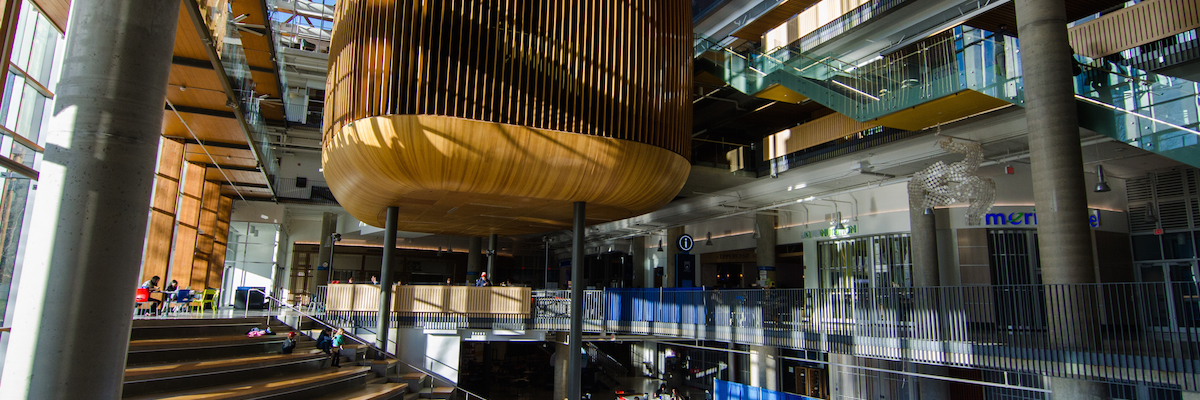UBC Forestry Student HyunGu Kang answers some questions about the 10,000 Cranes Initiative and what motivates her learning about Indigenous and non-Indigenous relations and reconciliation.
Our team is sometimes contacted by students who are interested in organizing or leading initiatives on campus to learn more about Indigenous communities, histories, and contemporary relationships. One recent project that sparked our curiosity is the 10,000 Cranes Initiative, organized by HyunGu Kang, a UBC Forestry student. The 10,000 Cranes Initiative will be displayed in the AMS Student Nest Atrium March 13-24th. Continue reading to learn more about the project and HyunGu.
1. Please introduce yourself.
My name is HyunGu Kang and I’m studying Natural Resources Conservation at the Faculty of Forestry. I was born in Korea, but my family immigrated to Toronto (a land governed by the Dish with One Spoon Treaty) when I was two. I don’t have memories of my home country, but my parents made sure that Korean culture, history, and the Korean language were always present in the home.
2. How did you become involved in this initiative?
I dreamt up The 10 000 Cranes Initiative while reflecting on my own country’s history. Cranes are special in Korea. Korean cranes dance, sing, and live as long as people do. They’re symbols of peace and loyalty and they, along with millions of Koreans, suffered during colonization in the early 1900s. Colonizers came for Korean land, labour, and women. Korea ended up being torn in half, and cranes were driven away. Similar events happened and continue to happen on this land, and as a settler whose family has been impacted by colonization, I felt a need both to show solidarity with Indigenous nations and to bring newcomer voices into reconciliation. The 10 000 Cranes Initiative does this by drawing on East Asian cultures to support Indigenous sovereignty in the face of the tar sands. The plan is to fold 10 000 paper cranes – 1 for each whooping crane estimated to have been alive at the time of European contact – and mount them in an art installation at the Nest. When the display is taken down, the cranes will be sent in packages of 1000 each (1000 cranes = 1 wish) to sponsors of the tar sands, which continue to destroy the cranes’ wetland habitat.
3.What was one moment, person and/or experience within your learning where you were motivated to learn more about Indigenous initiatives?
Last summer, I worked with an organization called Canadian Roots Exchange. They’re a national non-profit that promotes reconciliation among Indigenous and non-Indigenous youth, and it’s been a privilege to support their work both locally and nationally. The people I met there have heavily informed the way I view reconciliation and Canada as a whole.
4. How can faculty and others support students to become aware of these issues?
The way it’s been explained to me, decolonization happens in the mind. It can be difficult to even imagine a decolonized world when colonization is all you know. As a settler, colonization has shaped my view of the world by trying to define Indigeneity. If you define something, you can control it, and so much of my own learning has been tied to building relationships with Indigenous peoples, whose definitions of Indigeneity are the only ones that really matter. Our histories may be different, but the ideologies that benefit from those histories are often the same. I think UBC can support student awareness by drawing those links in history and culture, and by centering Indigenous voices in the ways they engage with students and their roots.
5. Can you tell us about the upcoming exhibit here at UBC?
The team has been hard at work all year, and we passed 10 000 cranes over Reading Break! We’ll be hanging them up in the Atrium at the Nest from the 13th to the 24th of March. Cranes in black-and-white will represent those that are now gone, and cranes in bright colours will represent those that have survived. There will be a curtain of cranes, along with the logos of the ten corporations they’ll be sent to when the display is taken down. We hope to send the cranes with signed petitions and form letters, and we’ll have those available at the display as well. Anyone and everyone is welcome to stop by!
